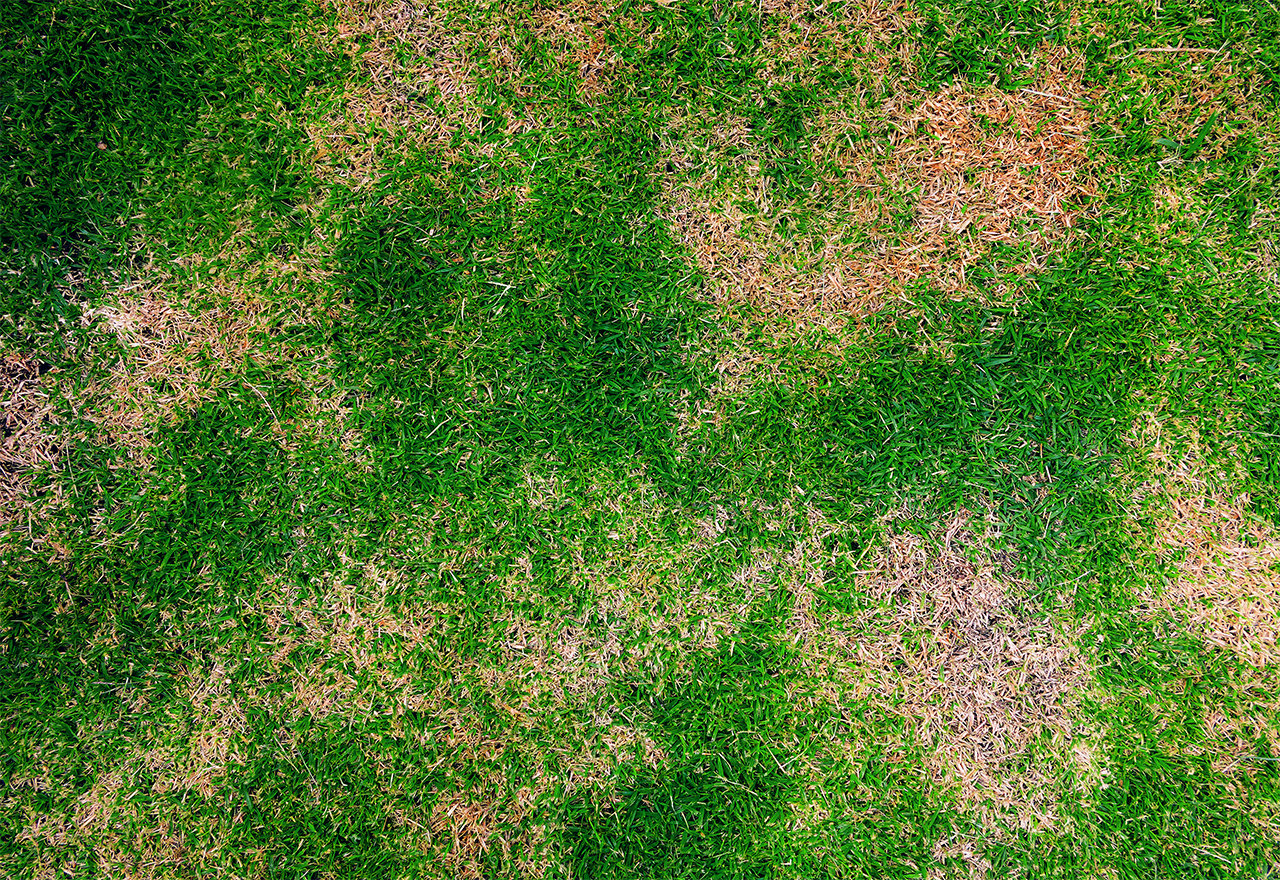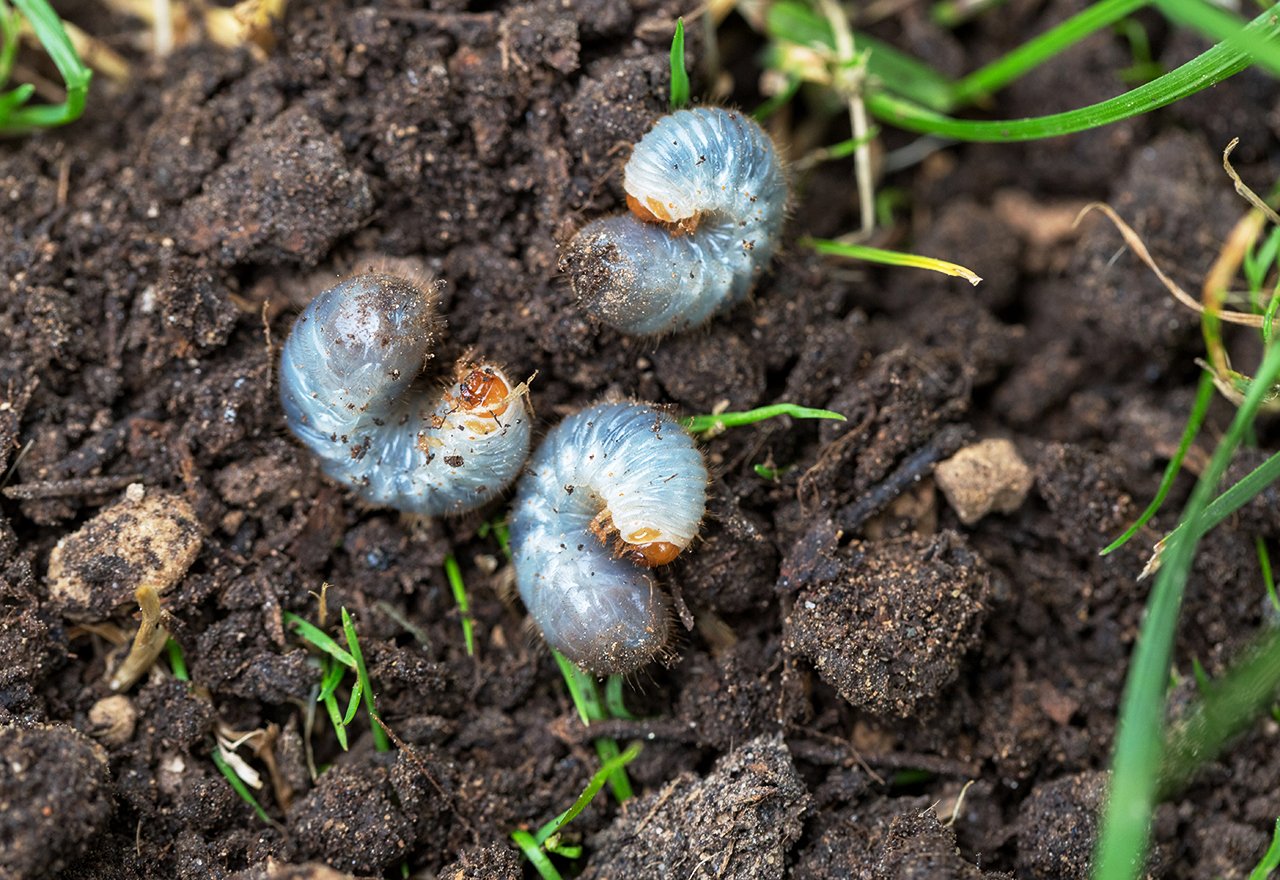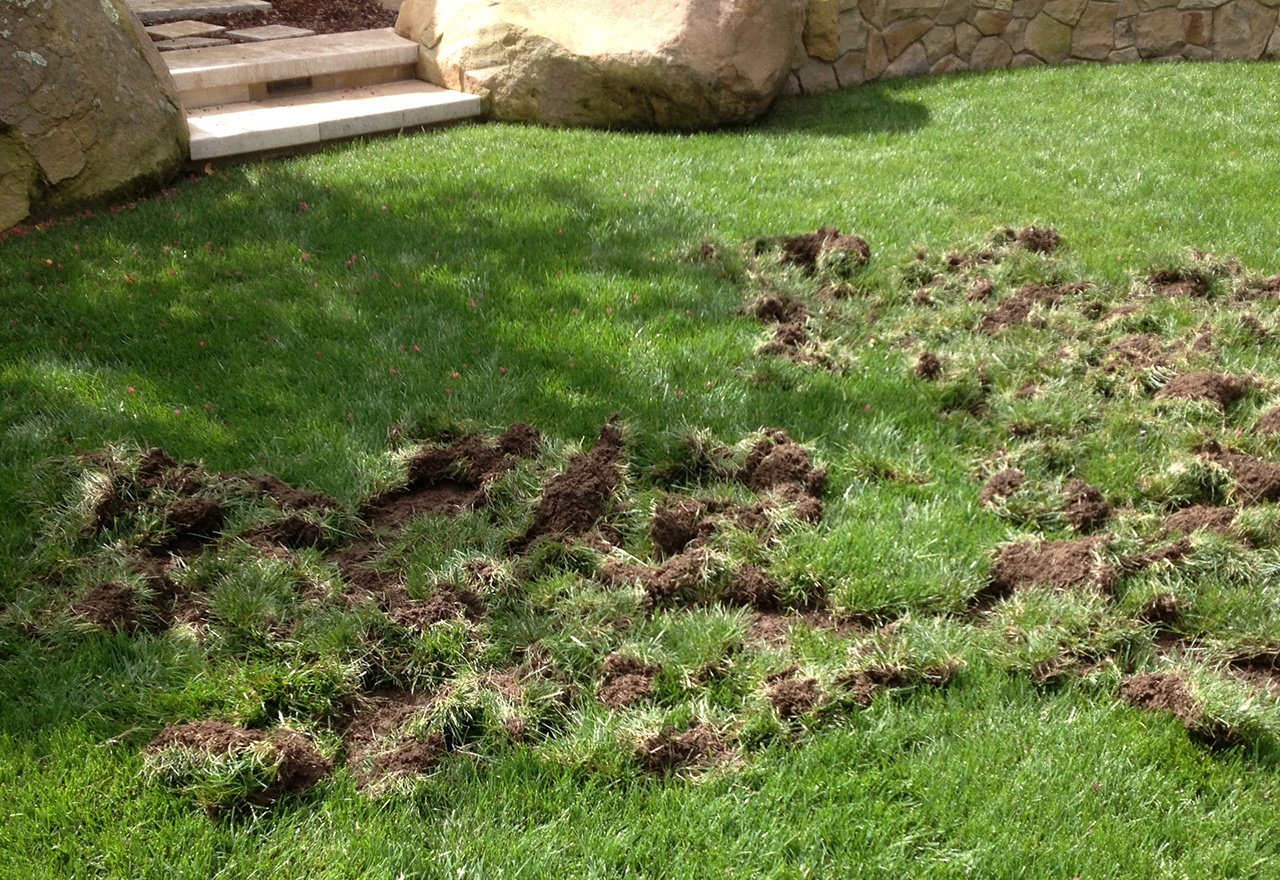Grub Damage in a Lawn
by Alec McClennan, on June 14, 2019
How A Grub Damaged Lawn Looks

It's kind of a bummer when you wake up one day and your lawn is turning brown. To add insult to injury, the local skunks and raccoons take up residence in your lawn. What's going on here? It's classic White Grub damage. You'll notice White Grub damage towards the end of September and through October. It's especially bad during years with heavy rainfall in July and August, or if you over-water your lawn. Summer rains attract grubs to your lawn and keep their eggs alive through hydration, long enough for them to turn into baby grubs. Baby grubs are really hungry and can quickly devastate a lawn, as seen in the image above.
How To Prevent Grub Damage Without Using Harmful Chemicals
So you don't want your lawn destroyed by grubs, but you don't want to use a chemical to kill them? There are a lot of good reasons to avoid using the standard grub control chemicals, which are linked to many bird deaths and the collapse of honeybee colonies. Additionally, the grub chemicals are typically applied in the Spring and sit on the lawn all season long, waiting for tiny grubs to show up in the Fall. Who wants your kids or dogs to be playing on a blanket of insecticide? Not me. Here's the good news, there is a totally non-toxic way to prevent grubs from tearing up your lawn, and it's really easy.

Beneficial Nematodes
Nematodes are microscopic soil organisms, as with most things, there are good nematodes and bad nematodes. The good nematodes are called "beneficial nematodes". Nematodes happen to enjoy making their home on grubs and eventually killing them. The more beneficial nematodes you have in your soil, the fewer issues with White Grubs, Fleas, and Ticks you'll have, because the nematodes kill them. How do you get nematodes in your soil you ask? It's easy, you can buy dormant nematodes and apply them with a hose end sprayer.
How to Apply Beneficial Nematodes
It's important to apply nematodes for grub control when the sun is not out, because too much sun exposure will kill them. At Good Nature, we try to apply them during days where there is a good chance of rain. If it's cloudy and rainy, the nematodes will have an opportunity to establish deep in the soil before the sunlight kills them. Think of nematodes as microscopic vampires who feed only on White Grub populations and other larvae in the soil. If you're applying them yourself, I would recommend either waiting for it to rain, or applying them as the sun is setting in the evening, and then setting up a sprinkler to saturate the area and help them sink more deeply into the soil.
A hose end sprayer is a great way to apply nematodes. Just dump in the Natural Grub Killer powder, add water, shake well and spray your lawn. Make sure the nematodes are well dissolved before trying to spray, or they may clog up your hose end sprayer. Also, I'd use about 50 million nematodes, enough to treat 5,000 square feet, per hose end sprayer. If you don't know the size of your lawn, try measuring it on www.findlotsize.com. Set the sprayer for 2 ounces per gallon, and spray 5,000 square feet multiple times until you're out of nematodes. When purchasing a hose end sprayer, we recommend Auto Mix Hose End Sprayer or Ortho Dial a Mix.
When to Apply Beneficial Nematodes
The best time of year to apply Nematodes to control White Grubs is in the late Summer or early Fall. If you water your lawn regularly, I'd recommend applying nematodes in late August. If you don't water regularly, anytime in September should work well, but the earlier the better.
How to Fix Grub Damage in a Lawn

Sometimes, skunks and raccoons will flip up chunks of sod looking for grubs. If you catch this in time and lay the sod back down then water it deeply, many times the lawn will recover. You can apply an organic animal repellent like Nature's Defense, or call in an animal trapper to relocate the pesky critters who are ruining your lawn. I prefer to use the repellent however, because it's difficult to control skunk and raccoon populations in an entire neighborhood.
If the lawn is just brown and dead looking, you'll probably need to reseed. The key to successful seeding is seed to soil contact. One labor intensive way to achieve this is to physically remove all the dead grass and haul it to your compost pile, then scrape up the soil with a garden weasel, seed the area, and mulch it with straw, 1 bale per 1,000 square feet.
Another way might be to order topsoil and cover the entire area of dead grass with a very thin layer of soil, around 1/2 inch. 1 yard of soil should cover about 500 square feet with a light layer of topsoil. To accomplish this, you would cover the dead areas with dirt, distribute seed, and mulch with straw. We recommend seeding with Good Nature Tuff Turf, which is a premium blend of Turf Type Tall Fescues (95%) and Kentucky Bluegrass (5%). Turf Type Tall Fescue has a deep root system and seems to be less likely to get damaged by grubs or animal digging. I wouldn't call it grub-proof, but it's a lot more resistant to grubs than shallow rooted grasses like Bentgrass.
If you have a large flat area of grub damage, it might make sense to rent a little machine specifically designed for fixing up lawns. It's a Toro Dingo with a Soil Cultivator attachment. The Soil Cultivator turns dead grass into soil that is ready to seed. It takes a little getting used to, and isn't effective if there are a lot of tree roots, but if you have an open lawn with dead areas, it works great. Check out our Lawn Renovation page for videos of the Soil Cultivator and Dingo in action.
Neem Oil for Grub Control
Oil from the Neem Tree in India works minor miracles on plants. It coats leaf surfaces and protects them from disease (great for roses) and acts as a repellent and antifeedant for insects that like to feed on plants. If you apply Neem Oil to your lawn three times a season (June, July, and August), the likelihood that you'll have grub damage is reduced. It may also protect the lawn from disease issues.
Try Using Milky Spore to Control Grubs
Milky Spore is another natural alternative for controlling grubs. I'm not a huge fan of Milky Spore for grub control because it only controls Japanese Beetle Grubs, and there are a plethora of other grub species that damage your lawn. Milky Spore is a good tool if you're trying to reduce the levels of Japanese Beetles in your yard, but not the best product if you're trying to control grubs in your lawn.
If you would like our help in controlling your grub populations, or preventing future grub damage, don't hesitate to give us a call. We are here to help. To learn more, read about our Organic Grub Control services.

















